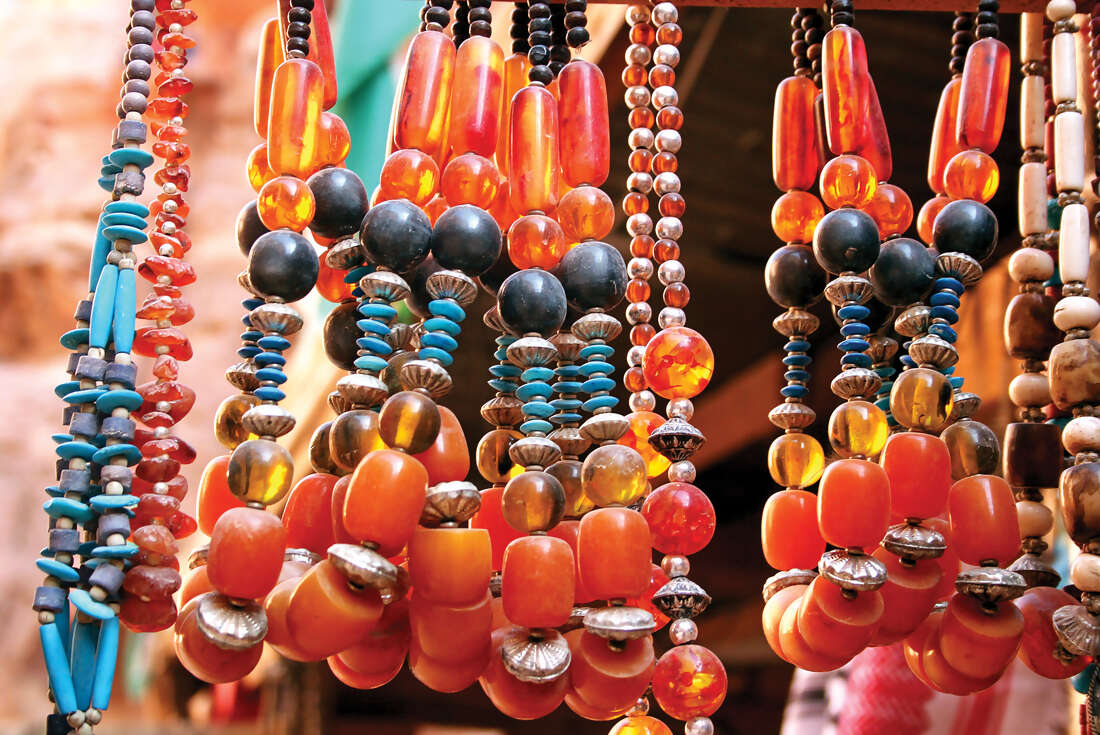 Uncover Egypt, Jordan, Israel & Palestine. Take a journey across lands that conjure up images of ancient civilizations, holy relics, cities carved from stone and sunrises over desert landscapes. Sip aromatic coffee in Cairo before you discover the pharaonic temples and tombs along the river Nile, take jeep safaris in Wadi Rum and the Negev desert and gaze up at unpolluted skies full of stars. Discover the Rose City of Petra, and the Roman city of Jerash before arriving in a city of a different kind modern cosmopolitan Tel Aviv. Taste what is arguably the best falafel in the middle east in Manger Square, and take a walking tour through the holy city of Jerusalem. Immerse yourself in this exploration across the best of the Middle East and gain a deeper understanding of this enduring land and its people.
Uncover Egypt, Jordan, Israel & Palestine. Take a journey across lands that conjure up images of ancient civilizations, holy relics, cities carved from stone and sunrises over desert landscapes. Sip aromatic coffee in Cairo before you discover the pharaonic temples and tombs along the river Nile, take jeep safaris in Wadi Rum and the Negev desert and gaze up at unpolluted skies full of stars. Discover the Rose City of Petra, and the Roman city of Jerash before arriving in a city of a different kind modern cosmopolitan Tel Aviv. Taste what is arguably the best falafel in the middle east in Manger Square, and take a walking tour through the holy city of Jerusalem. Immerse yourself in this exploration across the best of the Middle East and gain a deeper understanding of this enduring land and its people.Highlights
Witness the icons of ancient Egypt, from the pyramids and Sphinx to the Valley of the Kings.
Rest, relax and watch life unfold on the banks of the Nile during your 3 night river cruise.
Visit Bibliotheca Alexandrina inspired by Alexandria's ancient Great Library,.
Travel to Abu Simbel’s monumental temples by plane and marvel at the sheer scale of these stunning structures.
Journey in the footsteps of Laurence of Arabia and sleep and star gaze with your new Bedouin friends
The Rose city of Petra; enjoy a two day pass and a guided tour and discover the intricacies of this ancient city.
Spend some time in hip, modern, cosmopolitan Tel Aviv and discover a lively food scene
Visit the Relics of the Holy Lands including Jerusalem, Nazareth and Bethlehem.
Take a float in the Dead Sea and discover the Oasis of En Gedi
Stay on the edge of the Ramon Crater an internationally recognised dark sky, indulge in some optional stargazing and contemplate the universe.
Visit the site of the Battle of Beersheba (1917) especially poignant for Australians.









- You will visit the following places:
-

Cairo
Cairo, literally The Vanquisher or The Conqueror, is the capital of Egypt, the largest city in Africa and the 16th most populous metropolitan area in the world. Cairo is also ranked as one of the most densely populated cities in the world. Nicknamed The City of a Thousand Minarets for its preponderance of Islamic architecture, Cairo has long been a centre of the region's political and cultural life. Cairo was founded by the Fatimid dynasty in the 10th Century, but the land composing the present-day city was the site of national capitals whose remnants remain visible in parts of Old Cairo. Cairo is also associated with Ancient Egypt due to its proximity to the ancient cities of Memphis, Giza and Fustat which are nearby to the [Great Sphinx] and the pyramids of "Giza"
-

Alexandria
Alexandria is the second largest city and a major economic centre in Egypt, extending about 32 km (20 mi) along the coast of the Mediterranean Sea in the north central part of the country. It is Egypt's largest seaport, serving approximately 80% of Egypt's imports and exports. It is an important industrial center because of its natural gas and oil pipelines from Suez. The city is also an important tourist destination and is worth a visit for its many cultural attractions and still-palpable glimpses of its past.
-

Aswān
Aswan, formerly spelled Assuan, is a city in the south of Egypt, the capital of the Aswan Governorate. It is a busy market and tourist centre located just north of the Aswan Dams on the east bank of the Nile at the first cataract. The modern city has expanded and includes the formerly separate community on the island of Elephantine. Aswan is the smallest of the three major tourist cities on the Nile. Being the furthest south of the three, it has a large population of Nubian people, mostly resettled from their homeland in the area flooded by Lake Nasser. Aswan is the home of many granite quarries from which most of the Obelisks seen in Luxor were sourced. Aswan was the ancient Egyptians' gateway to Africa.
-

Luxor
Luxor is a city in Upper (southern) Egypt and the capital of Luxor Governorate. The population numbers 487,896 (2010 estimate), with an area of approximately 416 square kilometres (161 sq mi). As the site of the Ancient Egyptian City of Thebes, Luxor has frequently been characterized as the "world's greatest open air museum", as the ruins of the temple complexes at Kamak and Luxor stand within the modern city. Immediately opposite, across the River Nile, lie the monuments, temples and tombs on the West Bank Necropolis, which include the Valley of the Kings and Valley of the Queens. Thousands of international tourists arrive annually to visit these monuments, contributing a large part towards the economy for the modern city.
-

Amman
Amman is the capital and largest city of Jordan. It is the country's political, cultural and commercial centre and one of the oldest continuously inhabited cities in the world. It was named one of the area's best cities according to economic, labour, environmental, and socio-cultural factors. Amman is one of the most liberal cities in the Middle East and Eurasia. It is also one of the most "westernised" cities in the region, ahead of places like Cairo or Damascus. The city is generally reasonably well-organized, enjoys great weather for much of the year and the people are very friendly.
-

Wadi Rum
-

Petra
Petra is a historical and archaeological city in the Jordanian governorate of Ma'an that is famous for its rock cut architecture and water conduits system. Established sometime around the 6th century BC as the capital city of the Nabataeans, it is a symbol of Jordan as well as its most visited tourist attraction. It lies on the slope of Mount Hor in a basin among the mountains which form the eastern flank of Arabah (Wadi Araba), the large valley running from the Dead Sea to the Gulf of Aqaba. Petra has been a UNESCO World Heritage Site since 1985. The site remained unknown to the Western world until 1812, when it was introduced by Swiss explorer Johann Ludwig Burckhardt. It was described as "a rose-red city half as old as time" in a Newdigate Prize-winning sonnet by John William Burgon. UNESCO has described it as "one of the most precious cultural properties of man's cultural heritage." Petra was chosen by the BBC as one of "the 40 places you have to see before you die".